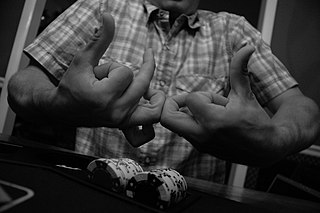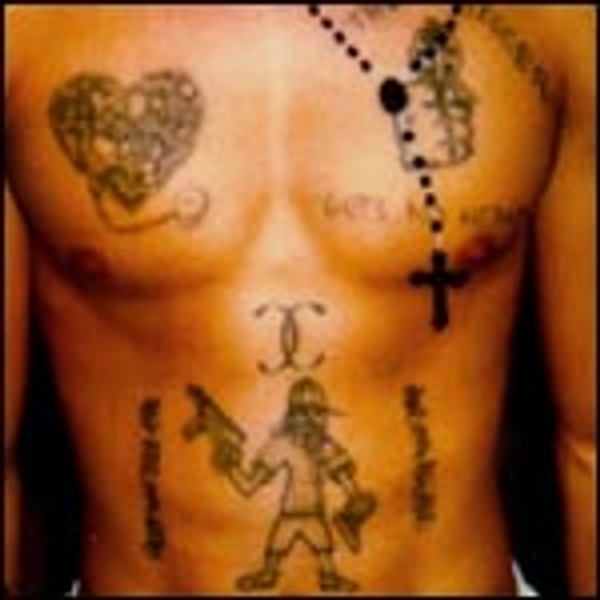The Watts Gang Task Force (also known as the WGTF) is a community-based group that was created to reduce gang related crime in the Watts, Los Angeles, California and improve community-police relations in the area.
The Watts Gang Task Force (also known as the WGTF) is a community-based group that was created to reduce gang related crime in the Watts, Los Angeles, California and improve community-police relations in the area.
In December 2005, over a 31-day period, violence in the Watts community escalated. There were 18 gang related shootings, seven of which were homicides. Los Angeles Councilwoman Janice Hahn called a meeting of community leaders, the Los Angeles Police Department, school representatives, service providers, gang intervention workers, and city departments and facilitated by Patricia Villasenor of the City of Los Angeles Human Relations Commission, to see how, together, they could stop the violence and improve police and community relations. This was the beginning of the Watts Gang Task Force. Since that first meeting in January 2006, the task force has met every Monday in Councilwoman Hahn's Watts office, and facilitated by the Human Relations Commission.
The greater Watts area has one of the highest concentrations of gangs within Los Angeles County. LAPD estimates that there are at least 59 known and active gangs in the Southeast Division. Specifically, the Watts/Southeast GRYD contains an estimated 14 known and active African American and Latino gangs, of which three are Blood cliques, eight are Crips cliques, and three are Latino cliques. The most active gangs in the GRYD according to law enforcement are African American gangs, due to the longstanding rivalries between the Bloods and the Crips, and the dominant gangs within the public housing developments.
| Crip Gangs | Blood Gangs | Latino Gangs | ||||||||
|---|---|---|---|---|---|---|---|---|---|---|
| Grape Street Watts Crips | Bounty Hunter Bloods | Watts Varrio Grape Street | East Coast Crip | Hacienda Village Boys | Morton Town Stoners | Back St Watts Crips Front St Watts Crips | Miller Bloods | 5th and Hill | ||
| Nut Hood Watts Crips | Bebop Bloods | Watts Varrio Locotes 13 | Elm Street Wattts Morton Town Watts | Twilight Zone Crips | Athens Park | Elm Street Watts | 112th Neighborhood | Circle City Piru | Ivy Street | |
| Avalon Gangster Crips | Village Boys | |||||||||
| 120th St Hustlers Crips | Family Swan Bloods | Suicidal | ||||||||
| Pee Jay watts Crips | 9 Deuce Bishops | Colonia Weigand | ||||||||
| 118 Holmes st crips | Southside Watts | |||||||||
| 92 hat gang | KILLING MOB 13 WATTS (KMOB) | Krazy Mexican Town KMT | ||||||||
| 7 STR watts | Nut Hood Watts 13 | |||||||||
| 99 watts mafia | Hickory st watts 13 |

The Bloods are a primarily African-American street gang founded in Los Angeles, California. The gang is widely known for its rivalry with the Crips. It is identified by the red color worn by its members and by particular gang symbols, including distinctive hand signs.

Stanley Tookie Williams III was an American gangster who co-founded and led the Crips gang in Los Angeles. He and Raymond Washington formed an alliance in 1971 that established the Crips as Los Angeles' first major African-American street gang. During the 1970s, Williams was the de facto leader of the Crips and the prominent crime boss in South Los Angeles.

Raymond Lee Washington was an American gangster, known as the founder of the Crips gang in Los Angeles. Washington formed the Crips as a minor street gang in the late 1960s in South Los Angeles, becoming a prominent local crime boss. In 1971, Washington formed an alliance with Stanley "Tookie" Williams, establishing the Crips as the first major African-American street gang in Los Angeles, and served as one of the co-leaders. In 1974, Washington was convicted of robbery and received a five-year prison sentence, during which his leadership and influence in the Crips declined.
Venice 13 or West Side Venice 13, abbreviated as V13 or VX3, is a Mexican American street gang based in the Oakwood neighborhood of Venice, a section of Los Angeles, California. It has a substantial presence in East Venice as well as the Culver City/Los Angeles border, especially around Washington Blvd.

The Harbor Gateway is a 5.14-square-mile residential and industrial area (13.3 km2) in the Los Angeles Harbor Region, in the southern part of the city. The neighborhood is narrow and long, running along a north-south axis. Its unusual shape has given it the alternative name of "the Shoestring Strip". The northern limit of the neighborhood is Imperial Highway, a city street just north of I-105.

The Crips is an alliance of street gangs that is based in the coastal regions of Southern California. Founded in Los Angeles, California, in 1969, mainly by Raymond Washington and Stanley Williams, the Crips were initially a single alliance between two autonomous gangs; it is now a loosely-connected network of individual "sets", often engaged in open warfare with one another. Traditionally, since around 1973, its members have worn blue clothing.
The Watts truce was a 1992 peace agreement among rival street gangs in Los Angeles, California, declared in the neighborhood of Watts. The truce was reached just days before the 1992 Los Angeles riots and, although not universally adhered to, was a major factor in the decline of street violence in the city between the 1990s and 2010s.
Black P. Stones Jungles is a division ("set") of the Bloods street gang in some parts of Los Angeles.

Gangs in the United States include several types of groups, including national street gangs, local street gangs, prison gangs, motorcycle clubs, and ethnic and organized crime gangs. Approximately 1.4 million people were part of gangs as of 2011, and more than 33,000 gangs were active in the United States.
Crime in Los Angeles has varied throughout time, reaching peaks between the 1970s and 1990s. Since the early 2020s, crime has increased in Los Angeles as well as elsewhere in the United States.

South Los Angeles, also known as South Central Los Angeles or simply South Central, is a region in southwestern Los Angeles County, lying mostly within the city limits of Los Angeles, south of downtown. It is "defined on Los Angeles city maps as a 16-square-mile rectangle with two prongs at the south end.” In 2003, the Los Angeles City Council renamed this area "South Los Angeles".
Pueblo Del Rio is a public housing project located in the Central-Alameda neighborhood of South Los Angeles, California. The address of Pueblo Del Rio is 1801 East 53rd Street, which is near the intersection of 55th and Alameda streets.
Santa Monica 13 or SMG is a Mexican-American street gang located in Santa Monica, California, United States. They reside mainly in the Pico neighborhood. Even though Santa Monica 13 is a Sureño gang, they wear their traditional black bandanas. The acronym SM17 refers to Santa Monica 17th Street, which is the gang's primary subset or "clique". They write up "SMG" or "Santa Monica Gang" to show solidarity.
Amongst the Asian Boyz, also known as ABZ, AB-26, or ABZ Crips, are a street gang based in Southern California. They were founded in the late 1980s as part of efforts of protection for Cambodian refugees from the more numerous American gangs in their localities. According to the FBI, the gang is predominantly Southeast Asian-American, of which Cambodian account for their majority, while Vietnamese and other Southeast Asians comprise sizable numbers. With approximately 2,000 members, many are known to have enlisted in the U.S. military through which some were able to use their position to traffic drugs. According to the FBI's 2009 National Gang Threat Assessment, the Asian Boyz are active in 28 different cities, in 14 different states across the U.S.
Gang activity and associated crime is a long-standing concern in Denver, Colorado. The city's street gang activity received statewide attention in 1993 when a "Summer of Violence" increased public awareness of gang-related violence and led the state to enact harsh penalties for crime by juveniles. From 1992 to 1995, Denver had 331 murders: 95 in 1992, 74 in 1993, and 81 each in 1994 and 1995 In 1997 The first Gang to ever be indicted out of Colorado was the West Side Ballerz Posse WSBP a Chicano gang that resided in West Denver & branched off in Adams county in cities such as Commerce, Thornton, Brighton, Westminster & other surrouIn 1996, members of the FBI's Metro Gang Task Force (“MGTF”) were investigating suspected gang-related drug activity in Denver, Colorado. Specifically, MGTF was investigating members of the West Side Ballerz Posse whom it suspected were selling controlled substances and engaging in gang-related violence. As part of this investigation, a series of wiretaps were authorized in late 1996 against suspected members of this drug conspiracy. Gang-related crime has continued, as shown by the New Year's Day 2007 drive-by shooting of Broncos cornerback Darrent Williams by members of the Tre Tre Crips, an East Denver street gang. The Crips in the city have several sub-sets such as Tre Deuce (DOD), Tre Foe, 35 Outlaws and the Tre Tre Gangstas. In 2017, the city's police estimated that there were 38,000 gang members in Denver, affiliated with 220 gangs. The Rollin 30s or Tre Tre Crips still have a powerful presence in the Denver area. In 2017 there were an estimated 2000 Bloods and Crips from Denver. These gangs are in various locations including Five Points, East Denver, Commerce City, Englewood, Aurora, North-East Park Hill and Federal Heights. Crips and Bloods have been commonly sighted almost all over Denver, even in the suburbs outside the city.

Crips and Bloods: Made in America is a 2008 documentary by Stacy Peralta that examines the rise of the Crips and Bloods, prominent gangs in America. The documentary focuses on the external factors that caused African-American youth to turn to gangs and questions the political and law enforcement response to the rise of gang culture.
Imam Mujahid Abdul-Karim is an African-American convert to Islam, who is best known for his involvement and "spearheading" of the April 26, 1992 Watts Gang Truce between the four influential rival gangs— Watts Hacienda Village Bloods, Grape Street Watts Crips, Bounty Hunter Watts Bloods, and PJ Watts Crips. He is imam of Masjid Al Rasul mosque in Watts, Los Angeles and the leader of The Imam Mahdi Movement.

The Bounty Hunter Watts Bloods, also known as the Bounty Hunter Bloods, is a predominantly African American street gang situated in the Nickerson Gardens public housing projects in Watts, Los Angeles.
James Hart Stern was an African American Baptist minister, civil rights activist, speaker, and author from Los Angeles, California. He was most well known for his work defusing gang violence through a series of summits in the 1980s and 1990s and for his incarceration with Edgar Ray Killen, the former KKK leader who was convicted of the 1964 Mississippi Burning murders.